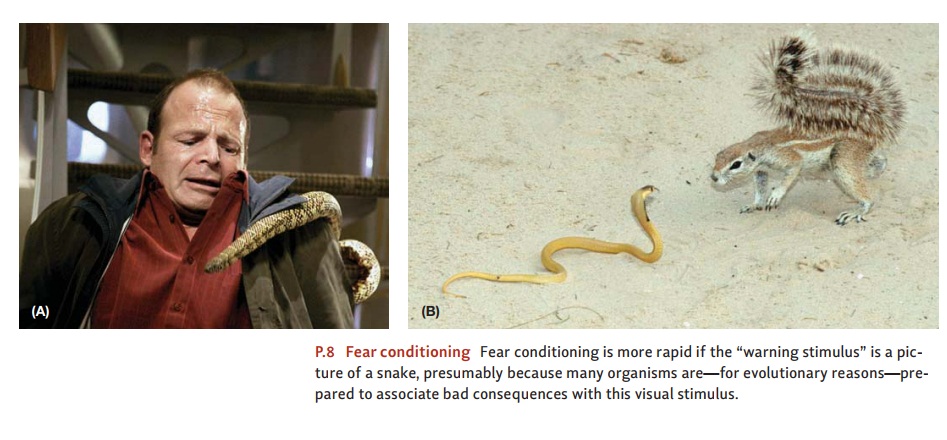Chapter: Psychology: Prologue: What Is Psychology?
The Evolutionary Basis for Emotional Remembering

The
Evolutionary Basis for Emotional Remembering
It seems, then, that the
structure of the brain provides one reason that people remember emotional
events so well—our memory for these events is directly shaped by a specific
interaction among the brain’s parts. This aspect of the brain’s “wiring” is
part of our biological heritage and is well established at birth—and so,
apparently, it’s specified largely by the blueprint laid out in our genes. But
where does this blue-print come from? The answer, in brief, is evolution: Our
ancient ancestors varied somewhat in their biological traits; and, thanks to
this variation, some of our ancestors were better suited to their environment
than others. These better-suited ancestors were therefore more likely to
survive than their less well-adapted neigh-bors, and so they were more likely
to reproduce and so more likely to pass on their genetic material to the next
generation. As this process then repeated itself, genera-tion after generation,
the genetic pattern passed onward by these better-adapted ancestors became more
and more common in our species. Consequently, modern humans are likely to have
inherited this genetic pattern as well as the traits that it produces.
Why might evolution have shaped
our memory for emotional events? One answer to this question starts with the
sorts of emotional events our ancient ancestors were likely to experience.
Encounters with dangerous predators would probably have filled our ancestors
with fear, and they would surely have considered these encounters worth
remembering so they could avoid facing the predator again. Likewise, the
discovery of a site with especially plentiful berries might have been
exciting—and this discovery, too, would be worth remembering, so that these
ancient humans would be able to find the berries again. Examples like these
remind us that it’s often useful to remember emo-tional events, because they
typically involve experiences and information that truly matter for us. It
seems plausible, therefore, that those of our ancestors who were espe-cially
able to remember emotional events might have gained a survival advantage—a key
element in evolution by natural selection.
In fact, evolution might have
tuned our capacity to remember in fairly specific ways. To understand this
point, consider a procedure known as fear
conditioning: An organism is given a warning stimulus (a bright light,
perhaps, or a tone) and then, a few seconds later, is presented with some
noxious stimulus (e.g., the sight of a predator, or a painfully loud noise).
With this setup, the organism quickly learns the significance of the warning
stimulus, and becomes fearful the moment it begins. This is a good thing ,
because the signal—and the organism’s understanding of the signal—gives the
animal time to prepare (or to flee) before the noxious stimulus arrives.
Not surprisingly, fear
conditioning is slower if the organism has suffered damage to the
amygdala—confirming the importance of this brain structure in supporting emo-tional
memory. For present purposes, though, the crucial thing is that the speed of
fear conditioning depends on the nature of the warning stimulus. A range of
organisms, including humans, show faster learning if the warning stimulus is a
picture of a snake than if it’s a picture of, say, a mushroom (Figure P.8). In
other words, the pairing of “see picture of snake, then receive electric shock”
produces more rapid learning than a pair-ing of “see a picture of a mushroom,
then receive shock.” This pattern holds even if the

individual organism has never in
its life seen a snake. It seems, then, that some organisms are prepared, in
advance of any learning, to associate bad consequences with the sight of a
snake. This response is almost surely a result of our evolutionary past, in
which rapid learning about snakes mattered for survival.
Amazingly, this pattern of faster
learning in response to snake pictures remains in place even if the snake
picture, as the warning stimulus, is flashed so quickly on a com-puter screen
that it’s virtually unrecognizable. This finding suggests that it’s not just
learning that prepares us for these stimuli, but perception—which allows us to
detect these (apparently threatening) creatures even from a split-second view.
Related Topics